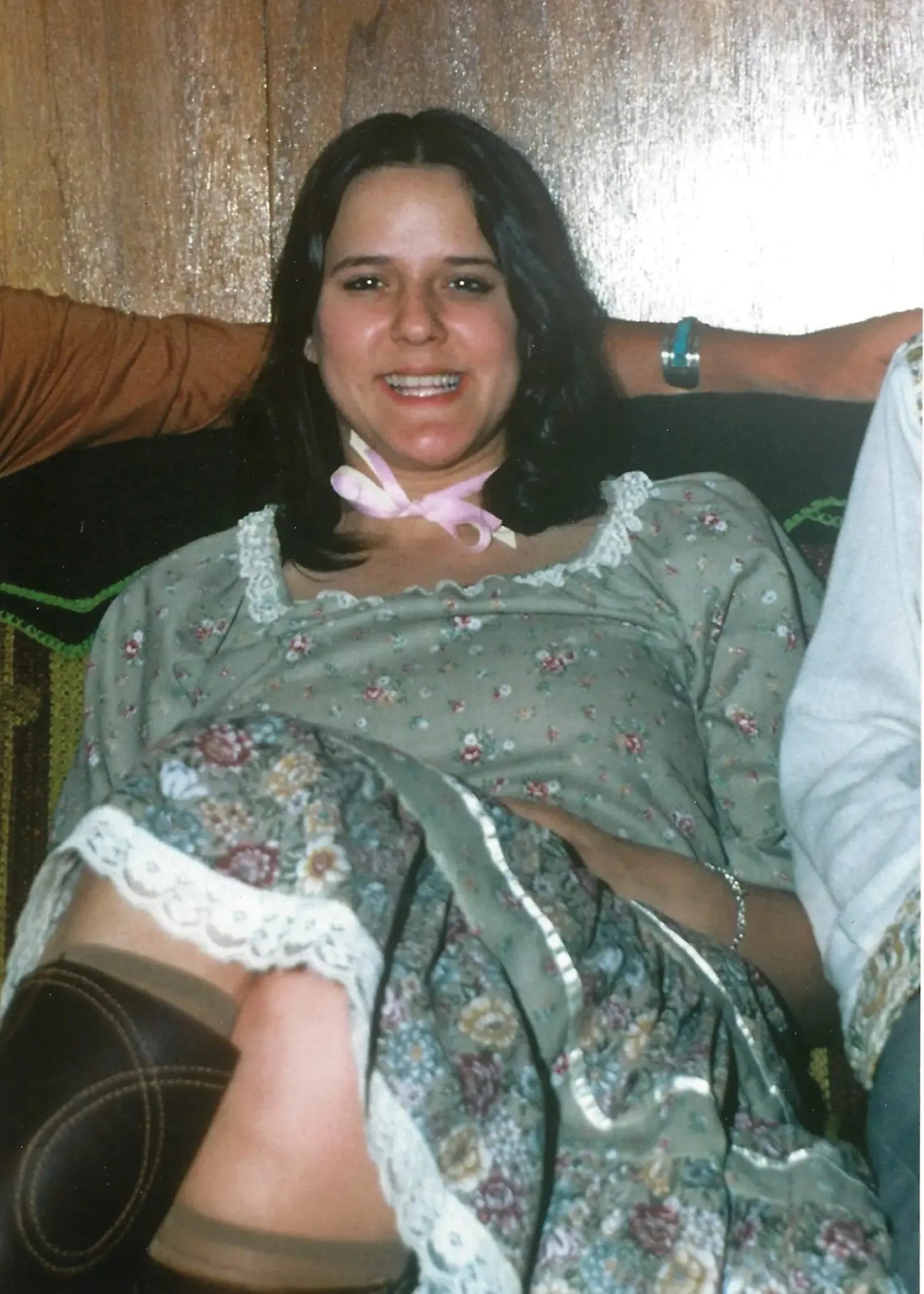DNA Identifies Oxnard Strangler
Investigators in California Have Made an Arrest in the Decades Long Unsolved Murder of 20-year-old Lisa Gondek
By Shawn R. Dagle
A four-decades long investigation into the unsolved murder of a Connecticut woman found strangled in the bathtub of her California apartment has led to the arrest of a karate instructor accused of murdering two young women in the early 1980s.
Using genetic genealogy investigators were able to identify DNA evidence from the murders of Lisa Gondek and Rachel Zendejas in December and January of 1981 as belonging to 68-year-old Tony Garcia.
At a press conference on February 9 Ventura County District Attorney Erik Nasarenko, Ventura County Sheriff Jim Fryhoff and Oxnard Police Chief Jason Benites announced the arrest of Garcia in connection to both women’s murder.
Strangled in her apartment in December of 1981 Lisa Gondek is alleged to have been Garcia’s second known victim.
Just months earlier Lisa had left her native state of Connecticut to venture to the west coast.
Prior to her trip to California Lisa had grown up in Glastonbury and later moved with her family to East Hartford.
Her junior year of high school Lisa dropped out to attend hairdressing school but became frustrated when she was unable to afford an apartment once she started working.
“In mid-1981 she planned a two-week trip to California to visit a friend who was in the United States Navy,” explained Benites.
Lisa’s friend lived in an apartment complex in Oxnard, California on West Gonzalez Road with her husband called the Sycamore Barracks. The apartments were popular with servicemen at the time. If Lisa could find work in California she planned on staying in Oxnard on a permanent basis which she was able to do.
“This two-week trip changed and she decided to stay in Oxnard,” explained the chief.
Lisa moved in with her friend and began hairdressing. It wasn’t long however before Lisa realized that hairdressing in California did not pay much better than in Connecticut and she started selling clothing at two shops including at a local mall.
“She got a job in retail at what used to be known as the Esplanade and made some friends,” according to Benites.
Soon after she moved to Oxnard Lisa’s friend and her husband were reassigned to Guam – leaving Lisa in the apartment alone.
The night of her murder – December 11, 1981 – Lisa went out with some of her friends.
“They first went to the enlisted club at the Port Hueneme Naval Base and after that they went to what was referred to as a disco in the northern part of Oxnard for the evening,” said Benites
The disco (which has since gone out of business) was called Huntington’s.
“They stayed until about 1:30 in the morning and the group of friends left and dropped Lisa off at her apartment complex,” Benites said.
Lisa had gotten a ride home that morning with a married couple. Also in the car was a man from the club whose motorcycle had stalled out at her apartment complex earlier that evening.
At the apartment complex the couple jumpstarted the man’s motorcycle. They last saw Lisa talking with the man outside her apartment at approximately 1:50 a.m.
Ten minutes later neighbors would report hearing screams coming from Lisa’s apartment, however they did not call police – later telling investigators that they did not want to get involved.
“At approximately 3 a.m. that morning of December 12, 1981, a neighbor reported seeing a fire coming out of Lisa’s apartment. Oxnard Fire Department personnel responded to the scene and extinguished the blaze but in doing so they located Lisa’s deceased body in the bathtub in the bathroom,” explained Benites.
The apartment manager was brought in to identify Lisa’s body. She was immersed in water with no visible injuries to her body except a bite mark on one of her cheeks.
Realizing that Lisa had been murdered the Oxnard Fire Department turned the case over to police.
“Detectives processed that scene. The Ventura County Medical Examiner the next day ruled Lisa’s cause of death as being that of strangulation and suffocation and ruled this as a homicide,” explained Benites.
Police eventually narrowed in on a suspect – an acquaintance of Lisa’s who had failed a polygraph and whose alibi was shaky. A forensic odontologist examined the bite mark left on Lisa’s cheek and an impression of the suspect’s teeth and determined they were a match.
Other experts however were not as certain. One expert said the impression could be a probable match, while another stated that the bite mark might match other individuals as well.
Police however were determined to charge the acquaintance with Lisa’s murder. The district attorney at the time however refused to prosecute the acquaintance believing there was not enough evidence to secure a conviction.
“Two generations of detectives have been working on this case. We’ve been familiar with this case for many, many years,” said Benites.
Lisa’s murder however eventually went cold. Then in 2004 a DNA profile obtained from the murder of another young woman in nearby Camarillo matched DNA from Lisa’s murder.
“On January 18, 1981, at about 6:30 in the morning, two newspaper delivery boys found a deceased female in a carport in the area of 701 Mobile Avenue,” explained Fryhoff. “The delivery boys, nine and fourteen years old, called 911 and notified the sheriff’s office. The female victim was identified as Rachel Zendejas who was 20 years old at the time of her death.”
The carport where Rachel was located was across the street from her apartment where she was then living with her two young daughters and her brother.
Born in Modesto, California in 1960, Rachel (who had five brothers) was the youngest child and a divorcee.
“Rachel and her family moved to Camarillo in 1974 and she attended Camarillo High School. She was a single mother of two daughters. She was attending Oxnard Community College taking classes in industrial arts to make a better life for herself and her daughters but unfortunately her life was cut short,” said Fryhoff.
An autopsy determined that Rachel had been strangled and sexually assaulted.
The night of her murder Rachel had hired two babysitters to watch her daughters. Like Lisa she had spent part of the night at Huntington’s.
“After returning from an evening out Rachel drove the babysitters home. Based on the evidence left at the scene investigators believe Rachel was accosted as she got out of her vehicle after returning from dropping off the babysitters,” said Fryhoff.
Rachel had been raped on the patio of a vacant apartment and then dragged across the street to the carport where her naked body was later discovered according to reports.
Investigators did not have many leads however to go on in Rachel’s murder. Eventually her case – like Lisa’s – went cold.
Then in 2002 police were able to obtain a DNA profile from Rachel’s body.
“The suspect DNA was entered into the Combined DNA Index System (CODIS), the federal database, searched against convicted offenders and there were no hits,” explained Fryhoff.
Two years later however another break came when the DNA was matched to DNA found in Lisa’s murder. It appeared their suspect had not only murdered Rachel but Lisa as well. Now all police had to do was identify who the DNA in both cases belonged to. That however was easier said than done.
“Sheriff investigators looked into this case further but were unable to obtain further leads and the case again became cold,” said Fryhoff.
More than a decade would pass before investigators would experience another major breakthrough in the case.
“In December of 2019 investigators from the Ventura County Cold Case Unit began using investigative techniques including that of genetic genealogy [and] later developed leads that identified the suspect as Tony Garcia,” said Fryhoff.
Those leads resulted in Garcia’s arrest on February 7 on charges involving the murder of both women.
Born in Roswell, New Mexico in 1954, Garcia enlisted in the Navy and according to investigators served from 1974 to 1980. During that time he was stationed in California.
Following his discharge Garcia remained in Ventura County where he was a resident of Oxnard. A carpenter by trade Garcia also was karate instructor and student.
“The fact is this suspect has been hiding in plain sight for over 40 years,” said Fryhoff.
Police are asking the public for any information regarding Garcia including other potential crimes.
“This is an ongoing investigation. We are going to be looking for any additional witnesses, victims or anyone else who might know information that could lead to additional charges against Mr. Garcia,” said Fryhoff.
At this month’s press conference authorities would not say whether the nightclub – Huntington’s – which both Lisa and Rachel were at the night and early morning of their murders was where Garcia allegedly first encountered his alleged victims.
“In the course of this investigation we have identified a number of common denominators that link the cases however at this point and time it is too early to release that to the public,” Benites said.
Police were also vague regarding how genetic genealogy was used to narrow in on Garcia as their suspect. Fryhoff said that information will come out at trial.
He also said he was not at liberty to discuss whether Garcia has any other criminal history.
Fryhoff said he was not aware of Garcia being on investigators’ radar in either murder before work began on the DNA profile using genetic genealogy.
Anyone with information regarding Garcia or the murders is encouraged to contact the Ventura County Major Crimes Bureau at 805-383-8704 or email coldcase@ventura.org.
-February 16, 2023
Sources
The Hartford Courant “Probe Frustrates Parents of Victim” Larry Williams March 21, 1983
The Ventura County Star “Two Families Share Same Tragedy” Colleen Cason December 10, 2006
The Ventura County Star “Oxnard Nightclub Might Hold Key to Killer” Colleen Cason, December 3, 2007
Ventura County District Attorney’s Office








